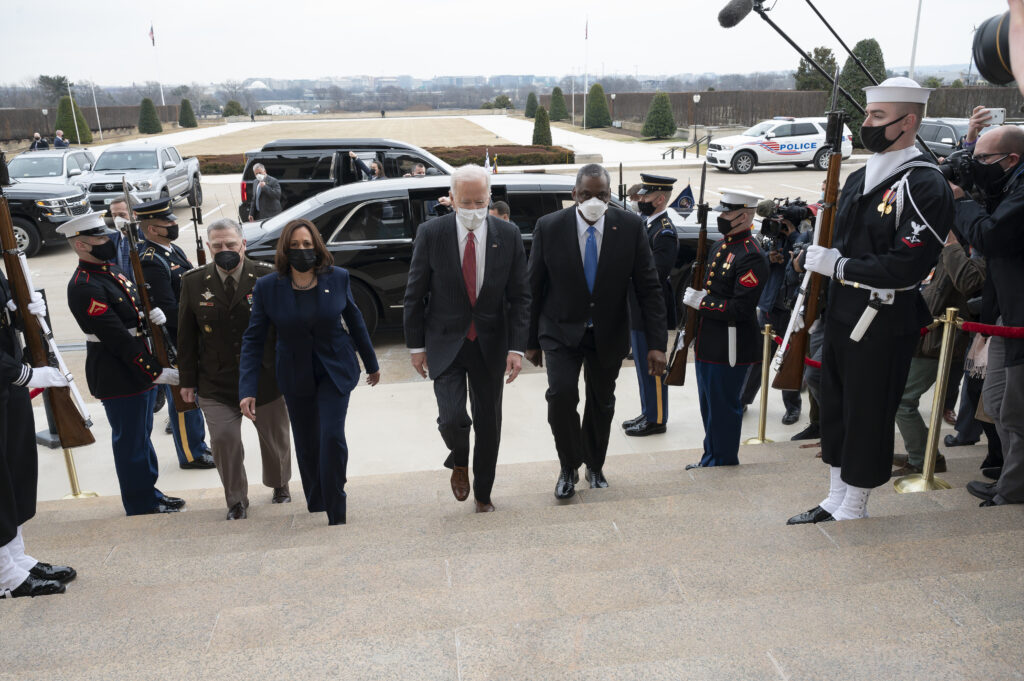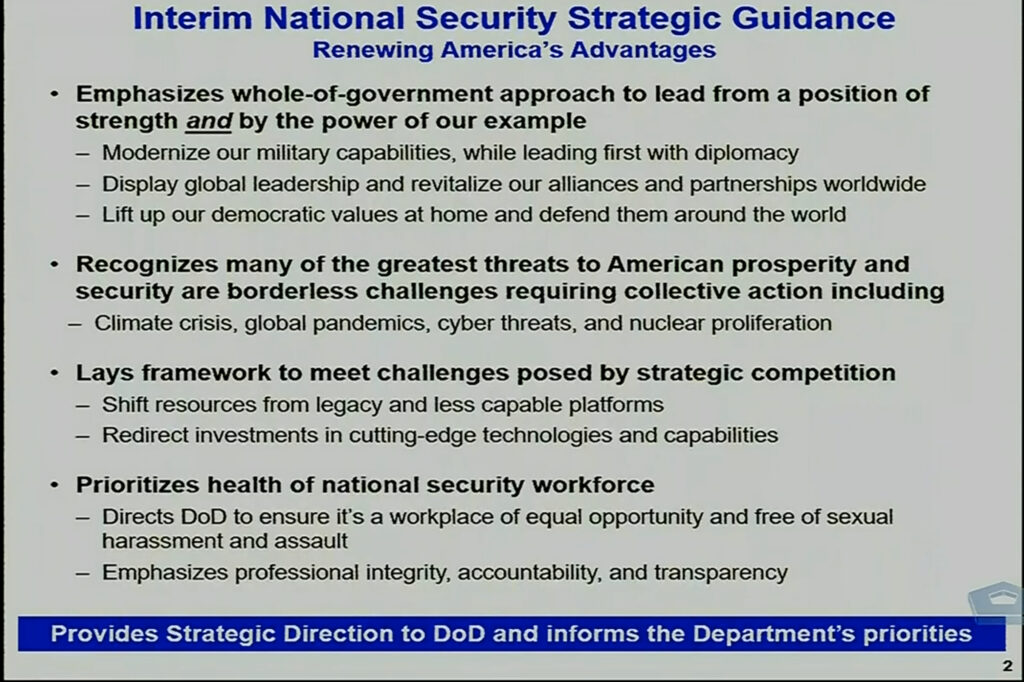
President Joe Biden and Vice President Kamala Harris at the Pentagon, with Secretary of Defense Lloyd Austin and Chairman of the Joint Chiefs of Staff Army Gen. Mark Milley
PENTAGON: The first Biden administration’s defense budget asks for $715 billion in for fiscal 2022, including a $5.5 billion increase in research and development accounts and an $8 billion cut in procurement, signaling a new focus on new technologies at the expense of older programs.
Introducing the budget today, Deputy Defense Secretary Kathleen Hicks said getting rid of older equipment will accelerate the department’s modernization push.
The budget “lessen[s] our reliance on vulnerable systems that are no longer suited for today’s advanced threat environment, or are too costly to sustain,” Hicks said. “Critically, we reallocate resources to fund research and development in advanced technologies such as micro-electronics. This will provide the foundation for fielding a full range of capabilities, such as hypersonic missiles, artificial intelligence, and 5G.”
Defense Secretary Lloyd Austin teased the big plus-up in R&D yesterday, but the drop in the procurement request alongside billions in proposed divestments across the services will be a major point of contention when lawmakers begin marking up the request this summer.
The rise in R&D funding has been a steady trend under the Trump and Obama administrations, but there’s frustration that the majority of those investments have yet to produce systems that have been pushed out to the deployed force.
“Record R&D is no longer enough,” said Mackenzie Eaglen, resident fellow at the American Enterprise Institute. Spreading on experiments isn’t “the solution to many of DoD’s problems — it’s time to start moving programs into procurement and production, beyond science experiments and prototypes,” she said.

Biden Interim National Security Guidance
The planned purchase of 12 ARRW (Air-Launched Rapid Response Weapon) hypersonic weapons by the Air Force represents one of the few brights spots in moving programs from development into the force
The demand for ships, aircraft, and troops from the Pacific to Europe and down through the Middle East to confront challenges presented by China, Russia, and Iran have stretched the Pentagon thin, and it’s ships and aircraft are increasingly in need of repair or replacement.
“It’s clear from persistently high global demand that the Pentagon needs capacity and capability,” Eaglen said. “Congress repeatedly states one of the reasons it resists divestiture of legacy systems is due to lack of capacity in meeting combatant commander requirements. This budget will be adjusted accordingly by the Hill.”
But those divestitures are coming — or at least they’ll be proposed.
On the Navy side, the service is pitching the scuttling of two older Cruisers, four Littoral Combat Ships — one of which is only 4 years old — and 55 F/A-18s in 2022 which would save around $650 million next year. Other divestments across the service would reach a total of $1.2 billion in savings, or roughly the cost of one new Constellation-class frigate.
The Army will get rid of just $47 million worth of equipment, while buying fewer helicopters and electronic warfare equipment than originally planned.
The services procurement requests dropped. The Navy’s declined by $2.7 billion; the Air Force’s fell by $1.3 billion; and the Army dropped by $2.3 billion.
The newest addition, the Space Force budget, is requested at $17.5 billion, up from $15.4 billion in 2021.
Republicans Sen. Jim Inhofe, ranking member of the Senate Armed Services Committee, and Rep. Mike Rogers, ranking member of the House Armed Services Committee, called the request “wholly inadequate” in a Friday afternoon statement. “Congress has the power of the purse,” they continued, “and we will work with our colleagues to get our military a sufficient defense topline in place that focuses resources on the Pentagon’s key mission areas.”





















